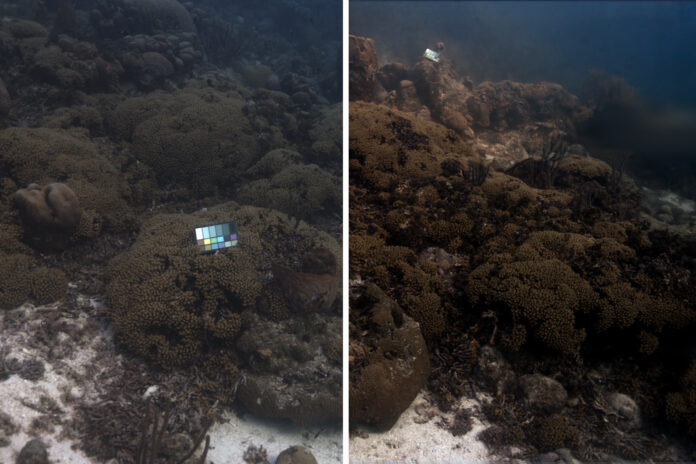Unlocking the Secrets of the Ocean
The ocean is home to a vast array of marine life, but much of it remains unseen due to the water’s ability to distort and scatter light. This makes it challenging to capture the true colors of underwater objects without getting up close. However, a team of researchers from MIT and the Woods Hole Oceanographic Institution (WHOI) has developed a revolutionary image-analysis tool that can cut through the ocean’s optical effects and reveal the true colors of underwater environments.
The Challenge of Underwater Imaging
When light travels through water, it can bend, scatter, and fade, making it difficult to capture accurate images of underwater objects. This is due to the presence of tiny particles in the water that reflect and absorb light, creating a haze-like effect. As a result, images of underwater scenes often appear distorted and lack the vibrant colors of the actual environment.
Introducing SeaSplat
The researchers have developed a tool called SeaSplat, which uses a combination of color-correction algorithms and 3D modeling techniques to generate accurate and detailed images of underwater environments. SeaSplat works by analyzing the distortion caused by the water and removing it, revealing the true colors of the objects. The tool can also create 3D models of underwater scenes, allowing scientists to explore and study them in unprecedented detail.
How SeaSplat Works
SeaSplat uses a technique called 3D gaussian splatting (3DGS) to stitch together images of an underwater scene and create a complete 3D model. The tool then applies a color-correction algorithm to account for the distortion caused by the water, resulting in a highly accurate and detailed representation of the underwater environment. This allows scientists to study the environment in a way that was previously impossible.
Applications of SeaSplat
The potential applications of SeaSplat are vast. Marine biologists can use the tool to monitor the health of coral reefs and detect signs of bleaching, which can be difficult to spot with traditional imaging methods. The tool can also be used to study the behavior of marine life, track the movement of ocean currents, and explore shipwrecks and other underwater structures.
Real-World Testing
The researchers have tested SeaSplat on a range of underwater images, including those taken in the Red Sea, the Caribbean, and the Pacific Ocean. The results have been impressive, with the tool generating highly accurate and detailed 3D models of the underwater environments. The team has also tested SeaSplat on images taken by a remote-controlled underwater robot in the U.S. Virgin Islands, demonstrating its potential for use in real-world applications.
Conclusion
SeaSplat is a groundbreaking tool that has the potential to revolutionize the field of underwater imaging. By providing highly accurate and detailed images of underwater environments, SeaSplat can help scientists to better understand and protect the world’s oceans. With its ability to create 3D models of underwater scenes, SeaSplat is an invaluable tool for marine biologists, oceanographers, and anyone interested in exploring the secrets of the ocean. As the tool continues to develop, it is likely to have a significant impact on our understanding of the ocean and its many mysteries.

